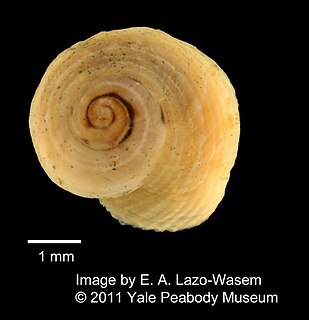Related Research Articles

The northern deep-brown dart is a moth of the family Noctuidae. It was first described by Christian Friedrich Freyer in 1848 and it is found in northern and western Europe.

Aporophyla lutulenta, also known as the deep brown dart, is a moth of the family Noctuoidea. The species was first described by Michael Denis and Ignaz Schiffermüller in 1775. It is found in Europe, primarily in central and southern Europe, near the Black Sea and the Caucasus.

Chrysopsyche is a genus of moths in the family Lasiocampidae. The genus was erected by Arthur Gardiner Butler in 1880.
Dasymetopa lutulenta is a species of ulidiid or picture-winged fly in the genus Dasymetopa of the family Tephritidae.

Muschampia is a Palearctic genus of spread-winged skippers in the family Hesperiidae.
Euxoa comosa, the hairy euxoa moth, is a moth of the family Noctuidae first described by Herbert Knowles Morrison in 1876. It is found in western North America, except the Pacific coast, ranging east through the northern Great Plains, and in the Hudsonian zone to the Atlantic Ocean. It is found in every province and territory of Canada, except Nunavut.
Peasiella lutulenta is a species of sea snail, a marine gastropod mollusk in the family Littorinidae, the winkles or periwinkles.

Peasiella is a genus of sea snails, marine gastropod mollusks in the family Littorinidae, the winkles or periwinkles.

Microplana is a genus of land planarians found in Europe and Africa.

Cerconota is a genus of moths in the family Depressariidae. In 1991, I. W. B. Nye and David Stephen Fletcher included it in the family Oecophoridae and the subfamily Stenomatinae. It was later placed in the family Elachistidae and subfamily Stenomatinae by Ronald W. Hodges, in Niels Peder Kristensen (1999). Other classifications placed them in the Elachistidae or Oecophoridae, but they actually seem to belong to the Depressariidae.
Eressa lutulenta is a moth of the family Erebidae. It was described by Snellen in 1879. It is found on Java and Sulawesi.
Pachycerosia lutulenta is a moth of the subfamily Arctiinae. It was described by Wileman and West in 1928. It is found in the Philippines.

Crossotini is a tribe of longhorn beetles of the subfamily Lamiinae. It was described by Thomson in 1864.

Huechys is a genus of cicada belonging to the family Cicadidae.
Cerconota lutulenta is a moth in the family Depressariidae. It was described by Philipp Christoph Zeller in 1877. It is found in South America (Brazil) and Central America.
Kosswigianella lutulenta is a species of delphacid planthoppers in the family Delphacidae. It is found in the Caribbean and North America.
Kosswigianella is a genus of delphacid planthoppers in the family Delphacidae. There are at least 10 described species in Kosswigianella.

Eurylophella is a genus of spiny crawler mayflies in the family Ephemerellidae. There are about 18 described species in Eurylophella.
Oxyna lutulenta is a species of fruit fly in the family Tephritidae.
Heteropan is a genus of moths belonging to the family Zygaenidae.
References
- ↑ Biolib.cz - Pseudohecyra lutulenta. Retrieved on 8 September 2014.